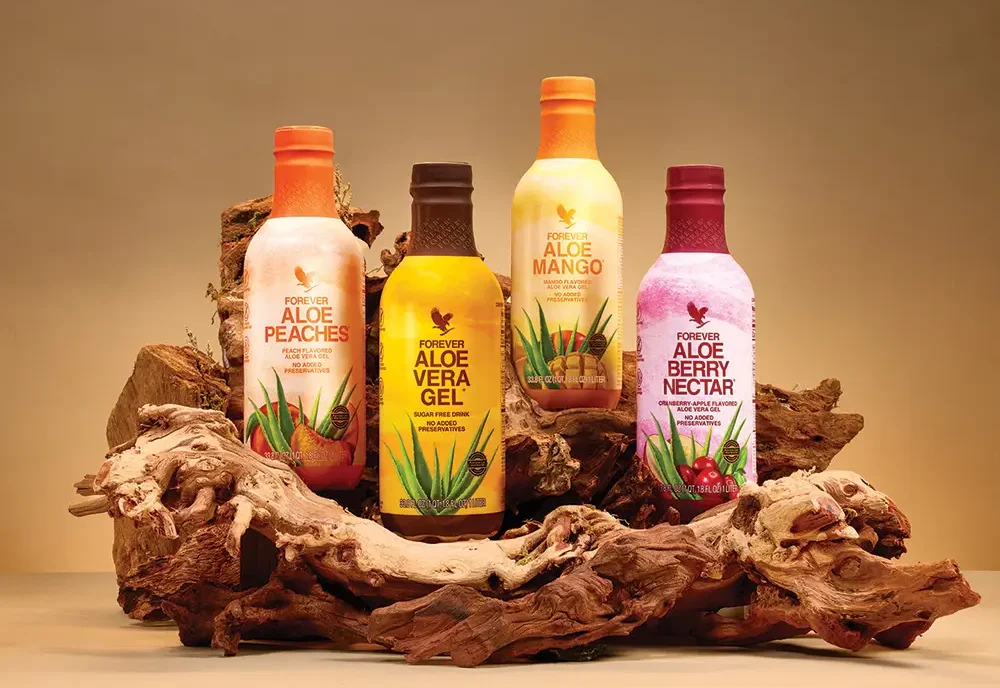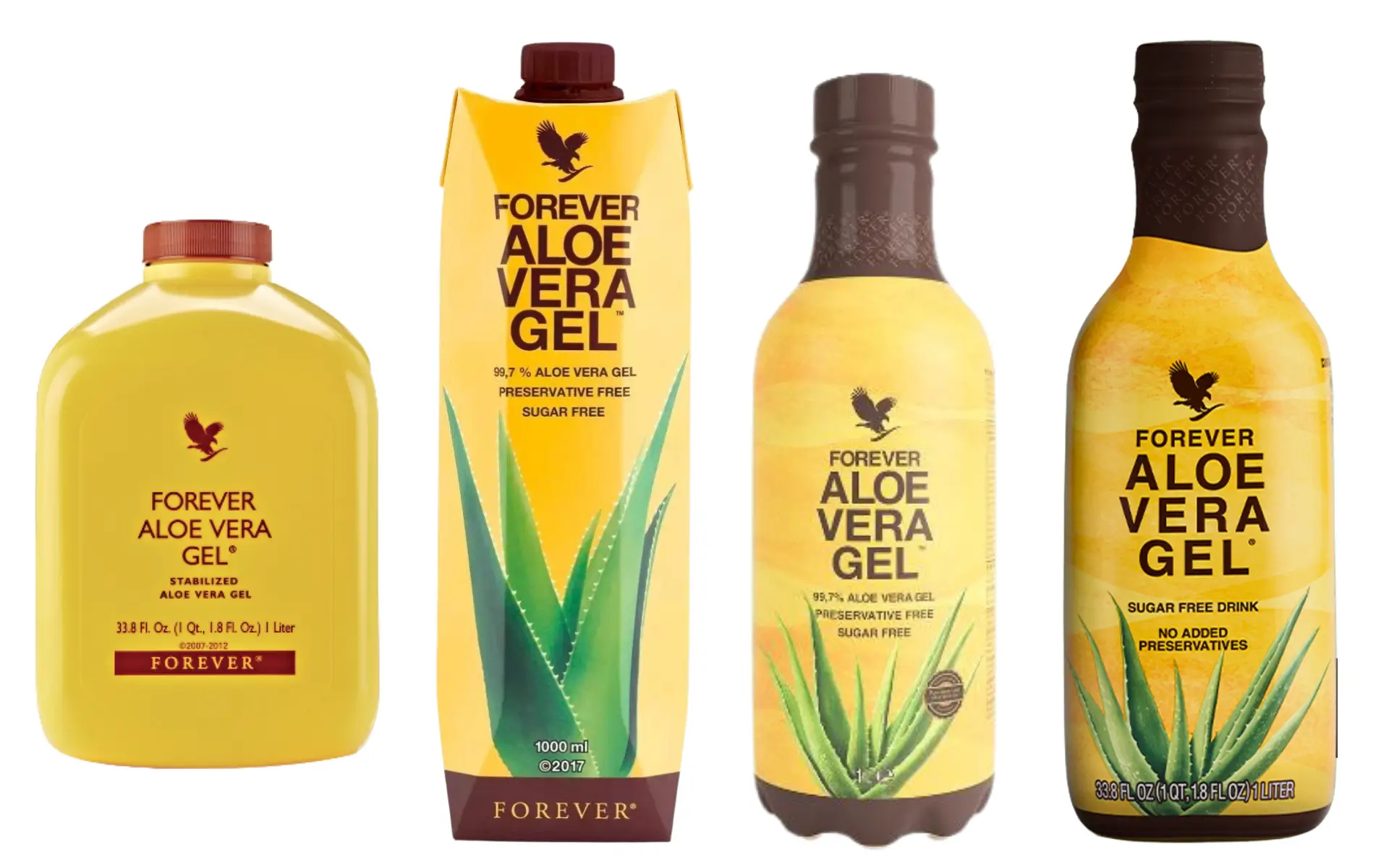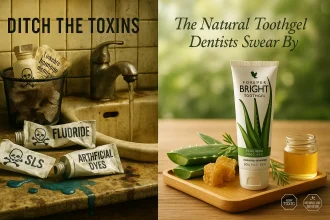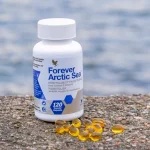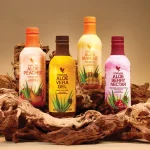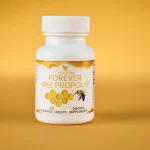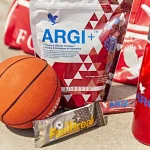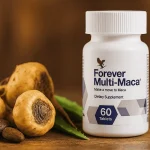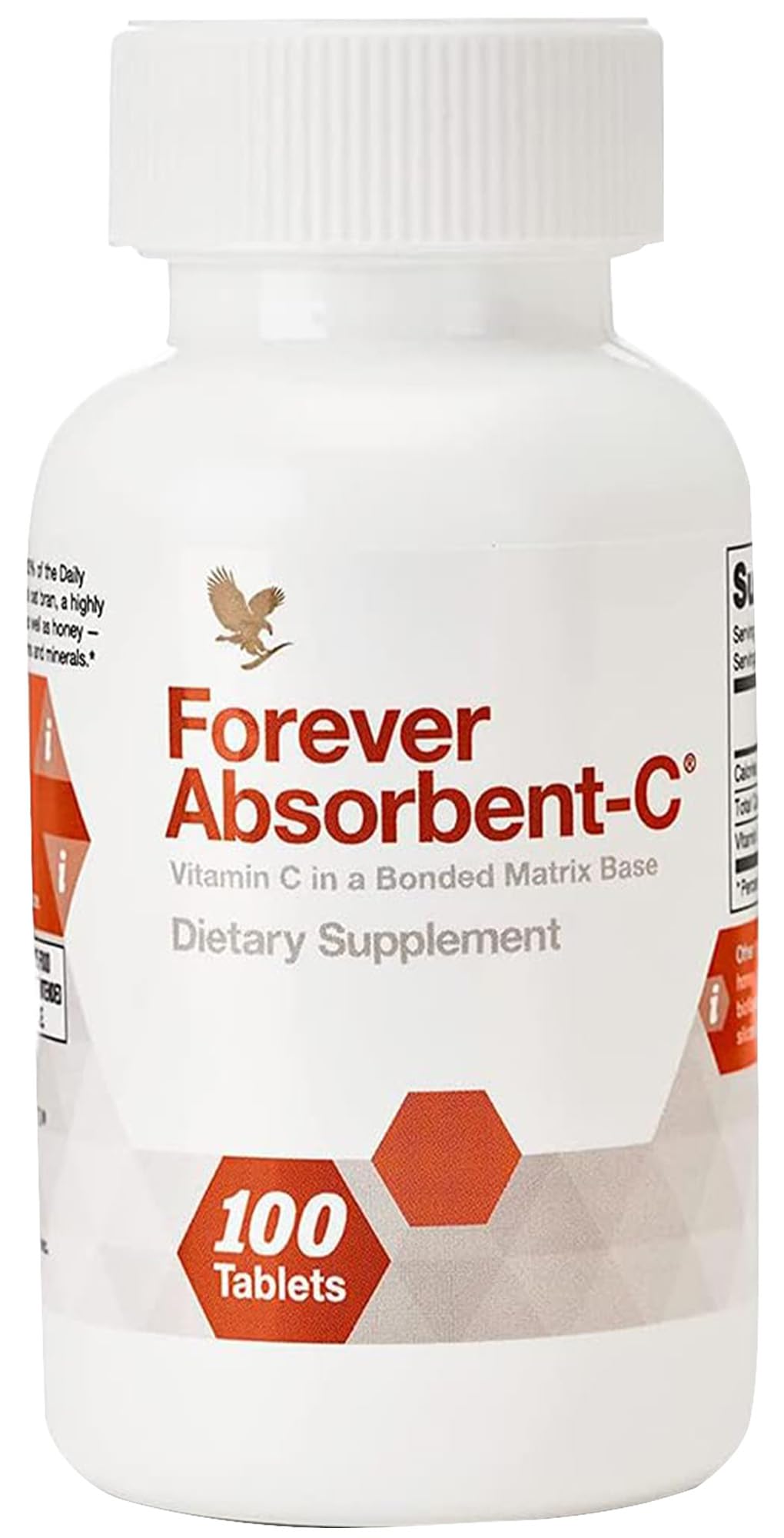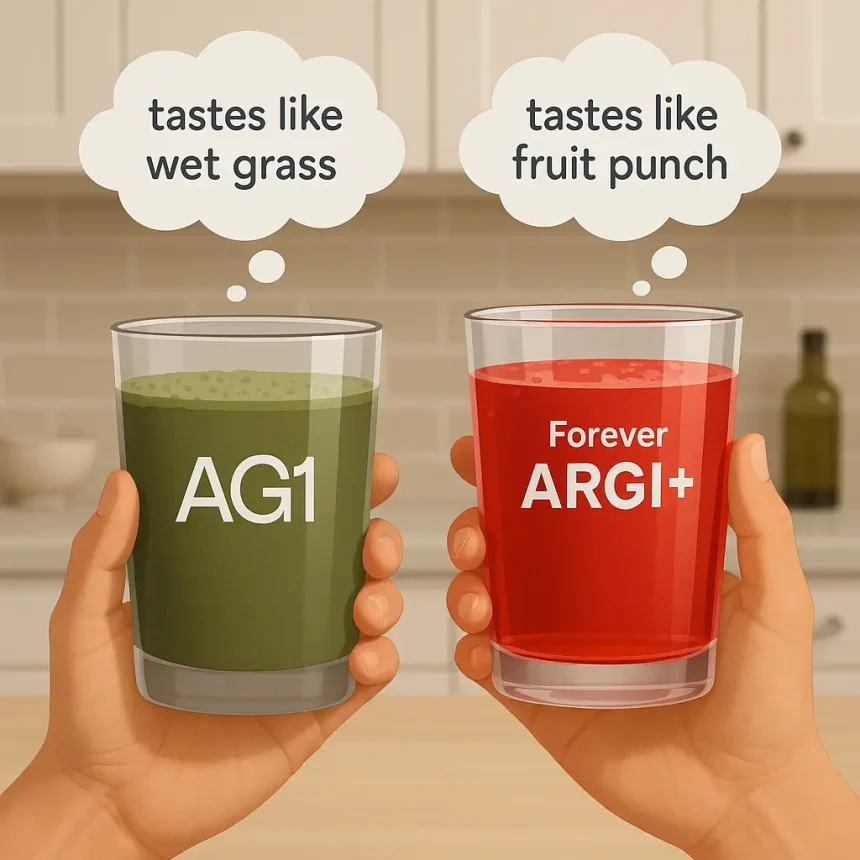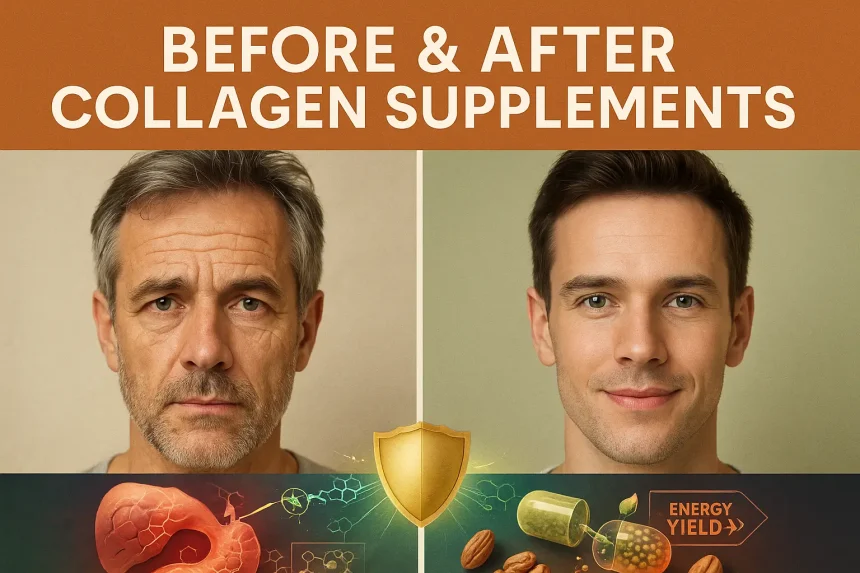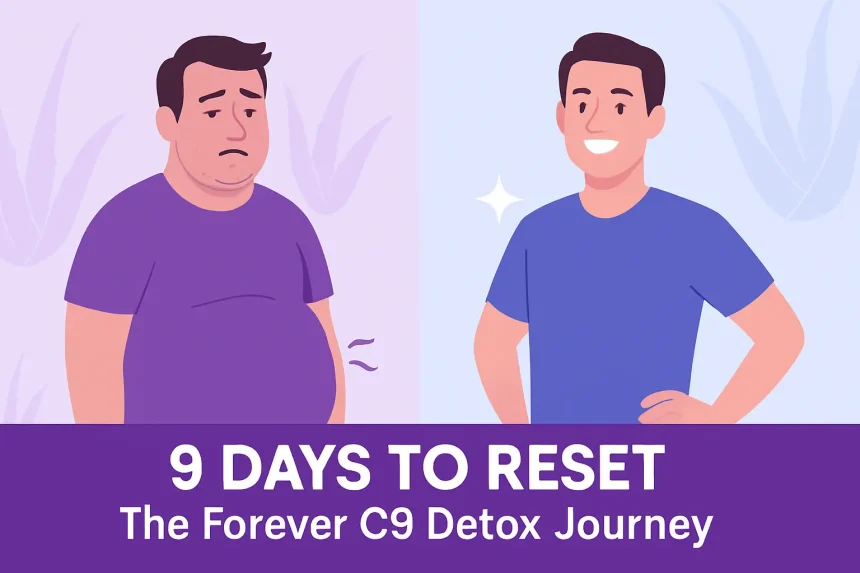Alright, let’s get real for a sec. You’ve probably seen that yellow bottle – Forever Living Aloe Vera Gel. Maybe it’s all over your feed, maybe your health-nut friend won’t shut up about it.
They say it’s organic magic for everything from calming down ticked-off skin to making your insides run like a dream. Sounds good, right? Almost too good for $24?
So, obviously, we had to investigate. Is this stuff genuinely the holy grail for that ‘lit from within’ glow AND sorting out your gut, or are we just chugging expensive plant juice?
We put it to the test – the feel, the (gulp) taste, the actual results. Before you even think about adding it to your cart, get the lowdown right here.
Does the legend live up?
Now, let’s dive deep. Grab a cup of tea (or maybe a shot of aloe?), get comfortable, and let’s talk about whether this bright yellow carton holds the natural key to unlocking better skin, soothing that sunburn, and calming your insides.
- What Makes This Product Unique? Unpacking the Forever Living Difference
- 1. 99.7% Pure Inner-Leaf Aloe Vera Gel – The Gold Standard
- 2. Organic Sourcing & Company-Owned Plantations – Control from Seed to Seal
- 3. Aseptic Cold-Processing – Locking in Freshness Without Preservatives
- 4. Nutrient-Rich & Exceptionally High in Acemannan – The Powerhouse Polysaccharide
- 5. Multiple Certifications & Rigorous Quality Testing – Verified Peace of Mind
- Drugstore Aloe Gel vs. Forever Living Aloe: A Quick Comparison
- Science-Backed Benefits & Uses: More Than Just Folklore
- 1. Deep Hydration for Thirsty, Sensitive Skin
- 2. Accelerated Sunburn Relief and Skin Healing
- 3. Supporting Gut Health and Digestive Comfort (The Drinkable Benefit)
- 4. Beyond the Big Three: Hair Care, Oral Health, and More
- A Potential Journey: What You Might Expect When Using Forever Living Aloe Vera Gel
- First Impressions (Days 1-3): The Ritual Begins
- Week 1: Settling In & Subtle Shifts
- Week 2-3: Noticeable Improvements Emerge
- Month 1 and Beyond: The Cumulative Effect
- Ingredient Deep Dive: Simplicity is Key
- How Does Forever Living Aloe Vera Gel Work? The Core Mechanisms:
- How to Use Forever Living Aloe Vera Gel: Your Complete Guide
- 1. Drinking Forever Living Aloe Vera Gel (Internal Use)
- 2. Applying Forever Living Aloe Vera Gel (Topical Use)
- Forever Living Aloe Vera Gelly vs. Gel Drink – Quick Clarification
- Pros vs. Cons of Forever Living Aloe Vera Gel
- The Shining Stuff: Where Forever Aloe Vera Gel Wins (The Pros)
- 1. Extremely High Purity & Quality: The Real Deal Holyfield
- 2. Dual Purpose (Internal & External): Your Bathroom Cabinet’s New Best Friend
- 3. Backed by Scientific Research: More Than Just Folklore
- 4. Clean Formula: No Added Junk
- 5. Cold-Stabilized for Maximum Nutrients: Keeping it Potent
- 6. Great for Sensitive Skin Conditions: A Soothing Balm
- 7. Trusted Brand with a Solid Guarantee: Decades of Dedication
- 8. Long Shelf Life Unopened & Eco-Friendly Packaging
- The Potential Stumbling Blocks: Where It Might Fall Short (The Cons)
- 1. Premium Price Point: Quality Has its Cost
- 2. Availability & MLM Model: Not Your Average Store Run
- 3. Taste and Texture Might Not Please All: Brace Your Taste Buds
- 4. Needs Refrigeration & Has a Use-By Time After Opening
- 5. Not Certified Organic (A Detail for Some)
- 6. Possibility of Allergic Reaction: Listen to Your Body
- 7. Not a Miracle Cure: Manage Expectations Wisely
- The Bottom Line on Pros vs. Cons
- How Does It Compare to Other Aloe Vera Products? The Aloe Showdown
- Where to Buy & Exclusive Offers: Getting Your Hands on the Good Stuff
- 1. Official Forever Living Store or Distributor (Safest & Recommended Route)
- 2. Amazon and Third-Party Retailers (Use Caution)
- 3. Exclusive Offers & Bundles (Direct from Forever)
- 4. Local Stores (Less Common)
- Breaking Down the Cost: Price Per Serving Perspective
- Burning Questions: Your Aloe Vera Gel FAQs Answered
- The Final Sip
- So, who is this really for?
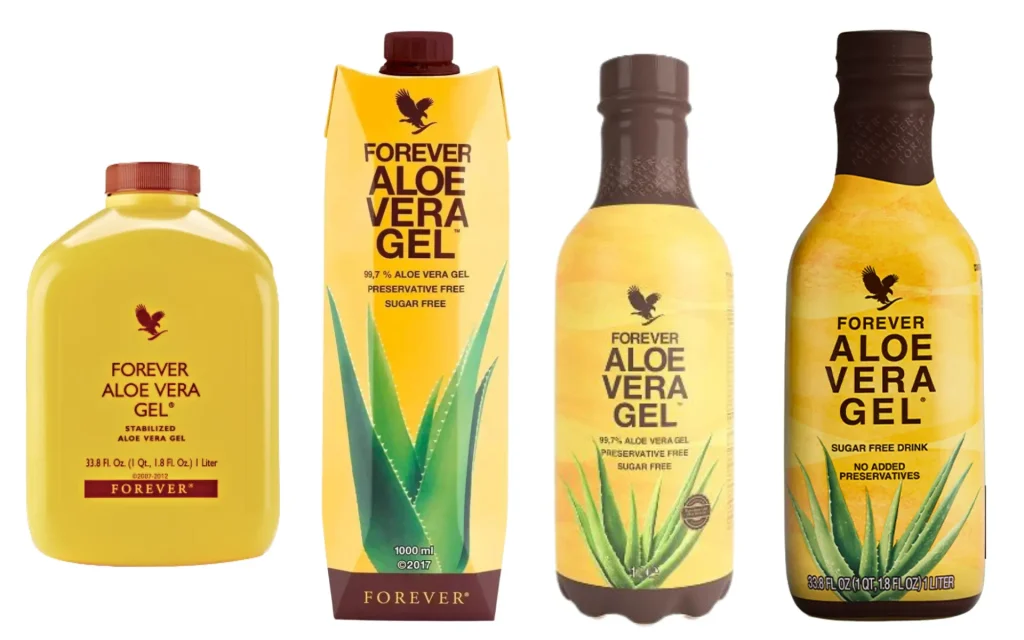
You’ve probably seen aloe vera products everywhere, right? From the neon green gel from distributors or in the drugstore aisle promising instant sunburn relief to fancy spa treatments. But let’s be honest, many of them feel… well, a bit underwhelming. Maybe they’re sticky, maybe they’re full of ingredients you can’t pronounce, or maybe they just don’t deliver those wow results you were hoping for.
If you’re nodding along, especially if you’re navigating the delightful complexities of skin and health that come with being over 30, you’re in the right place. We’re constantly searching for solutions that are effective and align with a desire for more natural, gentle approaches. We’re tired of harsh chemicals that irritate our increasingly sensitive skin, and we’re wary of digestive aids that seem to cause more problems than they solve.
That’s where the buzz around Forever Living Aloe Vera Gel comes in. This isn’t just another aloe product; it’s positioned as something different, something purer. It’s a drinkable gel, harvested from company-owned plantations, processed meticulously, and packed with what they claim is nearly 100% inner-leaf aloe goodness.
The promise? Head-to-toe relief, powered by nature and backed by science.
But does it live up to the hype? Can one plant-based gel really be the answer for dry, sensitive skin, offer genuine comfort after too much sun, and support better digestive health?
That’s exactly what we’re going to unpack in this comprehensive review. Think of this as your ultimate guide. We’ll explore:
- What makes Forever Living Aloe Vera Gel genuinely unique compared to the stuff you grab off the shelf.
- A deep dive into the forever living aloe vera gel ingredients – what’s in it, and just as importantly, what’s not.
- The science-backed forever living aloe vera gel benefits, digging into clinical studies for skin, sun care, and gut health (we’ll cover way more than just the top 3!).
- Real-world insights and forever living aloe vera gel reviews – what are people actually experiencing?
- A detailed look at how to take forever living aloe vera gel, whether you’re drinking it or applying it topically.
- Comparisons, potential downsides, and the forever living aloe vera gel price – is it worth the investment?
My goal here isn’t just to list facts. It’s to blend deep research with relatable experience, giving you the clarity you need. Consider me your guide, drawing on years of analyzing wellness products, cutting through the marketing fluff, and focusing on what truly matters for you. By the end, you’ll have a clear picture of whether this particular forever living product deserves a spot in your daily routine.
Let’s get started by looking at what truly sets this gel apart.
What Makes This Product Unique? Unpacking the Forever Living Difference
So, what’s the big deal about Forever Living Aloe Vera Gel (often called FLP Aloe Gel)? Why shouldn’t you just grab any old bottle with “aloe” on the label? It boils down to a few core principles that Forever Living Products has built its reputation on: Purity, Potency, Process, and Plantations.
1. 99.7% Pure Inner-Leaf Aloe Vera Gel – The Gold Standard
This is the headline feature and arguably the most important. Forever Living uses only the inner leaf gel of the Aloe barbadensis miller plant – the species most renowned for its therapeutic properties. Imagine slicing open a thick, juicy aloe leaf yourself and scooping out that clear, rich gel – that’s essentially what you’re getting. They meticulously hand-fillet the leaves to remove the outer rind, which contains aloin (a potent natural laxative you generally don’t want in high amounts, especially for drinking). This focus on the inner leaf ensures you get the beneficial compounds without the harsh irritants.
- Why it Matters: Many cheaper aloe products use the whole crushed leaf (including the rind) or are made from powders reconstituted with water, significantly diluting the concentration and potentially including unwanted components. FLP’s commitment to inner leaf gel resulted in it being the first product ever to receive certification from the International Aloe Science Council (IASC) for purity and potency. This isn’t just marketing speak; the IASC seal is a third-party verification that you’re getting authentic, high-quality aloe vera. For those seeking genuine forever living aloe vera gel benefits, this purity is paramount.
2. Organic Sourcing & Company-Owned Plantations – Control from Seed to Seal
Forever Living isn’t just buying aloe from random suppliers; they own their plantations in ideal growing climates like Texas and the Dominican Republic. These aloe plants soak up over 2,000 hours of sunshine annually in rich, fertile soil. While they don’t carry the official USDA Organic seal, the company emphasizes using natural farming practices – avoiding chemical fertilizers and pesticides. Owning the entire process, from cultivation and harvesting (done by hand!) to processing and packaging, allows them unparalleled quality control.

- Why it Matters: This vertical integration means consistency. You know the aloe hasn’t been exposed to harmful pesticides, and the quality is maintained from the moment the leaf is picked. It ensures traceability and accountability. Furthermore, the product holds Kosher and Halal certifications, which often indicate rigorous purity standards in sourcing and handling – extra peace of mind for many consumers. When looking at forever living aloe vera gel details, this control over the source is a significant factor.
3. Aseptic Cold-Processing – Locking in Freshness Without Preservatives
This is a huge differentiator. Most juices and gels (even some aloe products) are heat-pasteurized to kill bacteria and extend shelf life. However, heat can degrade delicate nutrients and enzymes, diminishing the plant’s natural benefits. Forever Living utilizes a state-of-the-art aseptic, cold-processing technique. The gel is extracted and packaged into sterile Tetra Pak cartons (those recyclable, shelf-stable boxes) in a vacuum-sealed environment. This process preserves the freshness and potency without needing artificial preservatives like sodium benzoate or potassium sorbate, which are common in many competitors and can be irritants for sensitive individuals. The formula is simply stabilized with a touch of Vitamin C (ascorbic acid) and citric acid to maintain pH and freshness.
- Why it Matters: You get a product that’s incredibly close to raw, freshly harvested aloe gel. The absence of artificial preservatives is a massive plus for anyone looking to minimize chemical intake, especially if you plan on drinking the gel daily or applying it to sensitive skin. The Tetra Pak packaging also protects the gel from light and air, further preserving its quality until you open it. This processing method directly impacts how does forever living aloe vera gel work – by keeping the beneficial compounds intact.
4. Nutrient-Rich & Exceptionally High in Acemannan – The Powerhouse Polysaccharide
Aloe vera isn’t just water; it’s a complex cocktail of over 75 naturally occurring nutrients. These include vitamins (like C, E, B vitamins), minerals (Calcium, Magnesium, Zinc, Chromium, Selenium), amino acids (building blocks of protein), and vital enzymes. But the real star player is Acemannan, a unique polysaccharide largely credited with aloe’s immune-supporting, anti-inflammatory, and healing properties. Forever Living’s gel boasts an Acemannan content nearly double the minimum requirement for IASC certification. They also boost the formula with added Vitamin C – a 330mL serving provides 150% of your daily recommended intake, contributing antioxidant power and supporting collagen production and immune function.
- Why it Matters: Potency translates to results. Higher Acemannan levels mean you’re likely getting more of the key compound responsible for many of aloe’s famed benefits. The rich nutrient profile contributes synergistically. This isn’t just diluted aloe; it’s a nutrient-dense gel designed for maximum impact, whether you’re seeking skin hydration or exploring the forever aloe vera gel drink benefits.
5. Multiple Certifications & Rigorous Quality Testing – Verified Peace of Mind
Beyond the IASC seal, Forever Living Aloe Vera Gel carries several other certifications: it’s Vegetarian and Vegan friendly, Gluten-Free, and as mentioned, Halal and Kosher certified. Crucially, each batch is tested to ensure the aloin content is incredibly low (less than 0.0003%), making it safe for regular ingestion at recommended doses. The company also stands behind its product with a 30-day satisfaction guarantee.

- Why it Matters: These third-party validations and internal testing protocols provide transparency and build trust. You’re not just taking the company’s word for it; independent organizations verify the purity, safety, and ingredient claims. The low aloin level is critical for differentiating it from potentially harsh laxative aloe products.
In essence, when you choose Forever Living Aloe Vera Gel, you’re opting for a product meticulously crafted for maximum purity and potency, using processes designed to preserve the natural goodness of the aloe plant without relying on artificial additives. It’s positioned as the “platinum standard” – but how does this stack up against the everyday options?
Drugstore Aloe Gel vs. Forever Living Aloe: A Quick Comparison
Not all aloe products are created equal. Many inexpensive gels found in pharmacies or big-box stores contain only a small percentage of actual aloe, diluted with fillers and chemicals. Here’s a comparison table to highlight the key differences:
| Feature | Forever Living Aloe Vera Gel (Drinkable) | Typical Drugstore Aloe Gel (Topical) |
|---|---|---|
| Aloe Vera Content | 99.7% pure inner leaf aloe vera gel (edible grade) | Often 10-50% aloe (water as first ingredient); some claim “100% gel” referring to gel form, not pure aloe. |
| Other Ingredients | Vitamin C, citric acid (for stabilization). No added preservatives, no artificial colors or fragrances. Gluten-free, sugar-free. | Typically contains preservatives (e.g. potassium sorbate, sodium benzoate), thickening agents (carbomer or xanthan), colorants (many gels are dyed green or blue), and often added fragrance or even alcohol. Not meant for ingestion. |
| Texture & Appearance | Liquid gel – slightly thickened juice consistency. Golden yellow color (from natural aloe inner gel + added vitamin C). May have pulp bits. Absorbs quickly on skin without stickiness. | Thick, jelly-like gel (thanks to thickeners). Often clear green or blue-tinted. Can leave a slight sticky or film residue on skin. Not intended to drink. |
| Processing Method | Cold-pressed and aseptically packed; no heat pasteurization, preserving active compounds. Requires refrigeration after opening. | Often pasteurized or chemically stabilized for long shelf life. Many are shelf-stable even after opening due to preservatives. |
| Shelf Life | Unopened: ~3 years shelf-stable. Opened: Refrigerate and use within 30-45 days for best potency (no preservatives means it can spoil if forgotten on the shelf). | Unopened: ~2-3 years. Opened: Can last several months at room temp due to additives. However, potency of aloe may degrade over time. Always check expiry on bottle. |
| Uses | Dual-use: Safe to drink daily for health, and also apply topically on skin/hair. Truly multipurpose (food-grade). | Topical only. (Most have warning “external use only” due to non-edible additives.) Primarily for soothing skin (sunburns, minor burns, etc.) and beauty DIYs. |
| Purity & Certifications | IASC-certified for content & purity; Halal, Kosher, vegan; internal QC ensures <10 ppm aloin (very low). No contaminants, no harsh chemicals. | Few mainstream aloe gels carry IASC certification. Purity varies – some brands use powdered aloe reconstituted with water. Often no info on aloin content or sourcing. |
| Sourcing | Aloe grown on company-owned organic plantations (quality controlled). Hand filleted to remove the bitter outer rind. | Aloe may be sourced from various suppliers or concentrates. Rarely organic; some cheaper gels use farmed aloe with pesticides or mixed sources (not always disclosed). |
| Price | $20-$25 for 1 liter (33.8 oz) bottle. ($0.75 per ounce). Comes in eco-friendly Tetra Pak. Bulk or member discounts available. | $6-$10 for 6-12 oz typical gel ($0.83 per ounce for a quality brand; as low as $0.50/oz for generic). Cheaper upfront, but you mostly pay for water and additives. |
| Availability | Buy from Forever Living website or distributors (official shop). Also found on Amazon via third-party sellers. Not in local retail stores. | Widely available at drugstores, supermarkets, and online retailers. Many brands and varieties on the shelf. |
| Unique Perks | Edible wellness drink + topical healer in one. High polysaccharide content (acemannan) for maximum efficacy. Backed by a 30-day money-back guarantee. Sustainable packaging. | Convenient for quick sunburn relief from the pharmacy. Some include lidocaine for numbing sunburn pain, which FLP’s pure gel does not have. Typically no satisfaction guarantee beyond store return policies. |
The Takeaway: They aren’t really comparable products. Forever Living Aloe Vera Gel is essentially a high-potency, food-grade aloe juice designed for both internal consumption and topical application, emphasizing purity and nutrient retention. Most drugstore “aloe gels” are cosmetic formulations designed for topical cooling, where aloe vera might be more of a marketing ingredient than the primary active component. They often contain alcohol (which can be drying!), artificial colors, fragrances, and preservatives that you might not want on sensitive skin, let alone ingesting.
If your main goal is simply a cheap, cooling sensation for occasional mild sunburn, the drugstore option might suffice (though check for drying alcohol!). But if you value purity, seek potent therapeutic benefits, plan to use aloe internally for forever aloe vera gel drink benefits, or need something gentle enough for very sensitive skin or regular use, the Forever Living product is in a completely different league. The higher forever living aloe vera gel price reflects the significantly higher quality, concentration, and meticulous processing involved. You’re paying for actual aloe, not mostly water, thickeners, and fragrance.
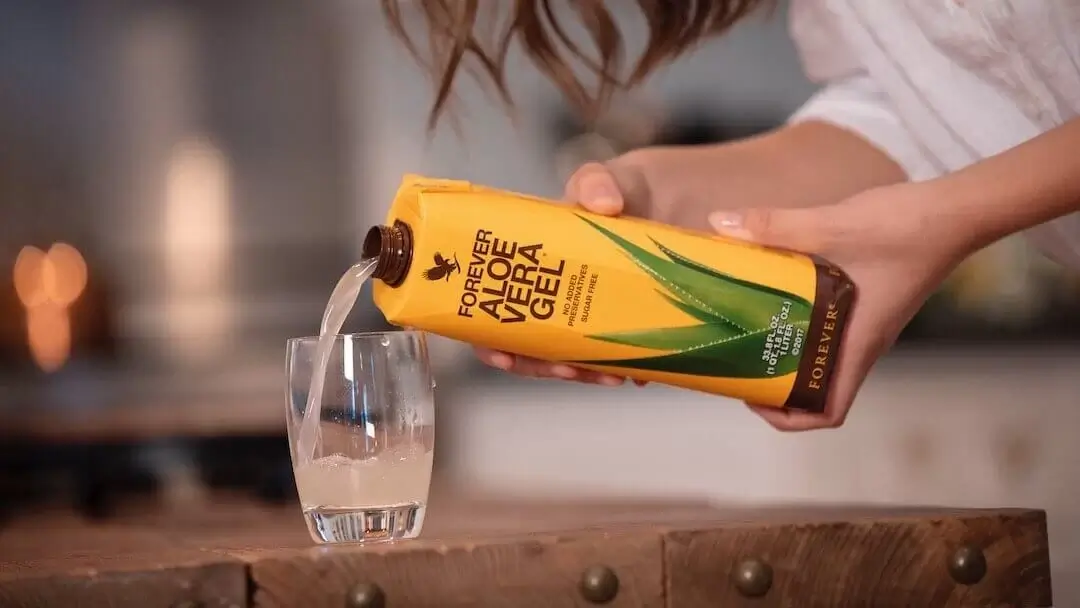
Forever Living Aloe Vera Gel
Now that we’ve established what makes this gel unique, let’s delve into the exciting part: the scientifically supported benefits and how you can actually use it.
Science-Backed Benefits & Uses: More Than Just Folklore
Aloe vera’s reputation as a healing plant isn’t just ancient wisdom; modern science is increasingly validating its diverse benefits. Thanks to its purity and potency, Forever Living Aloe Vera Gel is well-positioned to deliver these benefits effectively. Let’s break down some of the key uses, supported by research, and explore how to take forever living aloe vera gel for each.
1. Deep Hydration for Thirsty, Sensitive Skin
As we cross the 30 threshold, our skin often demands more hydration and gentler care. Dryness, dullness, and increased sensitivity become common concerns. Aloe vera, particularly a pure gel like FLP’s, can be a true ally.
- The Science: Aloe is packed with polysaccharides (like Acemannan) that act as humectants. Think of them as tiny sponges that draw moisture from the air and bind it to your skin. Peer-reviewed research confirms this: studies show that even low concentrations of aloe extract significantly boost the skin’s water content in the stratum corneum (the outermost layer) compared to formulations without it. A 2014 study published in Skin Research and Technology demonstrated measurable improvements in skin hydration after just a few applications of aloe vera gel.
- Soothing Power: Beyond hydration, aloe contains compounds like glycoproteins and salicylic acid (a natural BHA) that possess anti-inflammatory properties. This helps calm redness, irritation, and the general “angry skin” feeling that can accompany conditions like rosacea, eczema, or even just post-exfoliation sensitivity. Healthline and numerous dermatological sources acknowledge aloe’s efficacy in reducing erythema (redness) and soothing minor irritations.
- How to Use for Skin: This is where the versatility shines.
- Lightweight Moisturizer: Apply a thin layer directly to clean skin (face or body). It absorbs quickly without feeling heavy or greasy, making it ideal for oily or combination skin, or as a hydrating layer under a richer cream for dry skin.
- Soothing Serum: Use it before your regular serums or moisturizers, especially if your skin is feeling stressed or reactive.
- DIY Hydrating Mask: Mix the gel with a few drops of your favorite facial oil (like rosehip or jojoba) or a hyaluronic acid serum for an intense moisture boost. Apply, leave on for 15-20 minutes, then rinse or gently tissue off excess.
- Cooling Treatment: Store the carton in the fridge! Applying the chilled gel feels heavenly after sun exposure, a workout, or just on a hot day. It instantly helps to constrict blood vessels, reducing redness and puffiness.
- Post-Procedure Care: Its purity makes it suitable for calming skin after treatments like waxing, shaving, microdermabrasion, or even some laser therapies (always check with your practitioner first).
- Real User Feedback Connection: Many forever living aloe vera gel reviews online, especially in skincare forums, praise its ability to calm redness and provide non-irritating hydration, particularly for those with sensitive or acne-prone skin who react negatively to conventional moisturizers. The topical Forever Living Aloe Vera Gelly aloe vera gel (a related product specifically formulated as a thicker topical gel) is often cited for its exceptional moisturizing properties for dry skin.
2. Accelerated Sunburn Relief and Skin Healing
This is perhaps aloe’s most famous application, and the science strongly supports it. That immediate cooling relief isn’t just subjective; aloe actively helps the skin recover.
- The Science: Multiple studies and systematic reviews confirm aloe’s effectiveness in healing burns. A notable meta-analysis pooling data from several clinical trials found that aloe vera treatment significantly reduced the healing time for first and second-degree burns by almost 9 days compared to conventional treatments. Mount Sinai Hospital references clinical trials showing burn areas treated with aloe healed considerably faster (less than 16 days) than untreated areas. Compounds like aloin (in safe amounts) and Acemannan contribute anti-inflammatory and cell-regenerative effects. A study specifically using a high-purity (97.5%) aloe gel demonstrated significant reduction in UV-induced redness compared to placebo.
- Why it Might Be Better: Interestingly, some research highlighted by sources like WebMD suggests aloe vera gel can outperform standard treatments like petroleum jelly or even silver sulfadiazine cream (a common prescription burn ointment) in healing certain types of burns, likely due to its synergistic blend of moisturizing, anti-inflammatory, and tissue-repairing components.
- How to Use for Sunburn/Irritation:
- Apply Generously & Gently: Don’t rub vigorously on already damaged skin. Gently smooth a thick layer of the Forever Living Aloe Vera Gel over the affected area. Let it absorb.
- Reapply Frequently: Keep the skin consistently moist by reapplying the gel several times a day, especially after showering (pat skin dry gently first).
- Cool it Down: Use chilled gel straight from the fridge for maximum soothing relief from the heat and sting of the burn.
- Beyond Sunburn: Remember it for other minor burns (kitchen mishaps!), windburn, chafing, and especially razor burn. Its lack of alcohol and fragrance means it won’t sting or dry out irritated skin further, unlike many brightly colored after-sun products.
- Important Note: For severe burns (blistering, extensive areas, signs of infection), aloe is a helpful adjunct but does not replace professional medical evaluation and treatment.
3. Supporting Gut Health and Digestive Comfort (The Drinkable Benefit)
This is where Forever Living Aloe Vera Gel truly distinguishes itself – its primary design as a drinkable supplement for internal wellness. Emerging science is shedding light on forever aloe vera gel drink benefits.
- The Science – IBS & Gut Irritation: If you battle with Irritable Bowel Syndrome (IBS) or a generally “sensitive stomach,” this is compelling. A 2018 systematic review and meta-analysis published in the Journal of Neurogastroenterology and Motility concluded that aloe vera consumption demonstrated a statistically significant improvement in IBS symptoms (like abdominal pain and bloating) compared to placebo, with a good safety profile for short-term use. Researchers theorize that aloe’s potent anti-inflammatory action helps calm the gut lining. Acemannan may also play a role in modulating gut function.
- The Science – Digestion & Nutrient Absorption: Traditionally known as a “digestive tonic,” aloe contains natural enzymes (like amylase and lipase) that can assist in the breakdown of fats and carbohydrates. More importantly, its anti-inflammatory and potentially prebiotic effects may create a healthier gut environment. Forever Living Products’ own research suggests aloe helps the digestive tract absorb nutrients more efficiently and promotes a balanced gut microbiome. Some studies, including a pilot trial comparing aloe syrup to standard medications (like omeprazole), found it effective in reducing symptoms of Gastroesophageal Reflux Disease (GERD) without reported side effects, possibly by forming a soothing coating on the esophageal lining.
- The Science – Gentle Regularity: While high-aloin aloe products are harsh laxatives, pure inner leaf gel like FLP’s has a much gentler effect. Its high water content and soothing properties can help hydrate the colon and promote smoother, more regular bowel movements without causing cramping or urgency. Many users report improved regularity as a key benefit. Medical News Today articles often cite aloe’s potential to prevent stomach ulcers and improve overall digestion due to its anti-inflammatory compounds.
- The Science – Immune & Metabolic Links: Gut health is intrinsically linked to immune function (around 70% of your immune system resides in your gut!). Acemannan has been shown in studies to stimulate immune cells like macrophages and enhance immune responses. Anecdotally, many regular aloe drinkers report feeling more resilient against common bugs. Additionally, intriguing research suggests a role for aloe in metabolic health. A 2016 meta-analysis found that aloe vera supplementation was associated with improved fasting blood glucose levels in individuals with prediabetes and type 2 diabetes.
- How to Drink Forever Living Aloe Vera Gel:
- Recommended Dose: The standard recommendation is 2 to 4 fluid ounces (60-120 mL) per day.
- Timing: Many people prefer taking it first thing in the morning on an empty stomach, about 20-30 minutes before breakfast. This allows for optimal absorption. You can split the dose, taking half in the morning and half later in the day (e.g., before dinner) if you prefer.
- Taste & Mixing: Be prepared – this is 99.7% pure aloe! It has a unique taste often described as slightly bitter, tangy, or vegetal with a citrusy note (from the added Vitamin C and citric acid). It’s definitely drinkable straight, especially when chilled. However, if the taste is challenging for you, mix it with a small amount of water, coconut water, or your favorite fruit juice (avoid sugary ones if possible). Blending it into a morning smoothie is also a popular option – the flavor usually gets masked completely.
- Consistency is Key: For digestive benefits, think of it like any supplement – consistent daily use is crucial to see results. Effects are often cumulative over weeks.
- Start Slow: If you have a particularly sensitive stomach or are prone to loose stools, start with a smaller dose (e.g., 1 ounce or 30 mL) once a day and gradually increase as your system adjusts. The extremely low aloin content means it shouldn’t cause laxative effects at normal doses, but individual responses can vary.
4. Beyond the Big Three: Hair Care, Oral Health, and More
The benefits of forever aloe vera gel don’t stop there. Its multi-tasking nature lends itself to various other uses:
- Hair & Scalp Treatment: Aloe’s moisturizing, enzymatic (helps break down dead skin cells), and antimicrobial properties make it fantastic for the scalp. Massage the gel directly onto your scalp to soothe itchiness, combat dryness, and potentially reduce dandruff flakes. Leave it on for 20-30 minutes before shampooing. You can also use a small amount as a lightweight leave-in conditioner to hydrate hair strands and tame frizz without stickiness.
- Oral Health Aid: Research has shown that aloe vera mouthwash can be effective in reducing plaque and gingivitis (gum inflammation), comparable in some studies to standard chlorhexidine mouthwashes but without the side effects like staining. While drinking it contributes, you could also swish a small amount of the Forever Living Aloe Vera Gel in your mouth for 30-60 seconds to soothe canker sores, mouth ulcers, or irritated gums. (Forever Living even makes an aloe-based toothgel).
- Post-Workout Recovery: While not a replacement for proper nutrition and rest, aloe’s anti-inflammatory properties might offer some support. Drinking it post-workout contributes hydration and electrolytes (like potassium and magnesium). Topically, it’s excellent for soothing skin chafing caused by exercise gear.
- Minor Skin Issues: Dab it on insect bites to reduce itching and inflammation. Use it on minor cuts or scrapes to keep them moist and potentially speed healing (aloe has mild antibacterial properties). Apply it to calm skin after shaving (face or body) – many men find it superior to alcohol-based aftershaves that sting and dry.
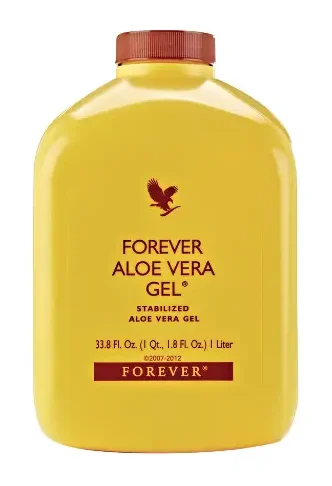
Claim your 15%off here…
Why pay $24.70 on Amazon like everyone else…. Today, I’m giving you a price that lets you actually test it without second-guessing.
The Science Bottom Line:
Looking across the board, aloe vera stands as one of the most versatile and scientifically supported natural remedies available. From clinically proven benefits in skin hydration and burn healing to promising results in digestive health (particularly IBS and GERD), its applications are broad.
Forever Living Aloe Vera Gel, with its emphasis on purity, high Acemannan content, and careful processing, is formulated to maximize these inherent forever living aloe vera gel benefits. It’s not an overnight miracle cure, but the breadth of research supporting its key components makes it a compelling option for those seeking natural solutions backed by evidence.
We’ve covered perhaps not exactly 10 benefits of forever aloe vera gel, but certainly a wide range demonstrating its versatility.
Now, let’s move from the lab and clinical trials to what it feels like to incorporate this into daily life. What kind of results might you realistically expect?
A Potential Journey: What You Might Expect When Using Forever Living Aloe Vera Gel
Okay, we’ve covered the science and the specs. But what’s it really like to use Forever Living Aloe Vera Gel consistently? While individual results always vary (we’re all unique!), let’s walk through a relatable journey based on common user experiences and the insights gleaned from countless forever living aloe vera gel reviews. Think of this as a “potential experience” guide to help you envision how it might fit into your life and the changes you could notice over time.
First Impressions (Days 1-3): The Ritual Begins
You receive your bright yellow Tetra Pak carton. It feels substantial. Following the instructions, you shake it well and pour your first dose – maybe 2 ounces (60 mL). The liquid is pale gold, perhaps slightly viscous, not watery thin but definitely not thick like the topical gels. The smell is subtle – faintly plant-like with a hint of citrus.
You take the plunge! The taste is… distinctive. Not unpleasant, but not sweet juice either. That slightly bitter, tangy, lemony-vegetal flavor hits your palate. Many find it quite refreshing, especially chilled. You might drink it straight or mix it with a splash of water. You wait… and likely nothing dramatic happens immediately. Importantly, for most people, there’s no sudden urge to run to the restroom (thanks to that low aloin content).
Topically, you might try applying a thin layer to your face after cleansing. It feels cool, soothing, and absorbs quickly. There might be a slight, temporary tightening sensation as it dries, which vanishes once you apply moisturizer or it fully absorbs. Your skin feels soft, not sticky.
Cleansing Hack with Aloe Vera Gel
If you want to use it for cleansing, find a day when you will be staying home for at least 6 hours.
Wake up in the morning on that day, and before eating anything, drink the entire 1 liter within half an hour.
Then, continue with your activities around the house. Stay active; don’t just sit down. Heat some warm water and start drinking it continuously (one portion after another).
The result? You will eliminate all the waste from your digestive system.
A word of caution: do not visit anyone’s house. They might not welcome you again, because the resulting bathroom odor will be notably unpleasant.
Week 1: Settling In & Subtle Shifts
You’ve established a routine: that morning shot of aloe, perhaps applying it topically at night. Consistency starts to pay off in small ways.
- Skin: You might notice your skin feels more consistently hydrated throughout the day. That mid-afternoon tightness or the flaky patches around your nose or chin might start to diminish. Waking up, your skin could look a bit plumper, dewier. If you have baseline redness or sensitivity, it might seem slightly calmer.
- Gut: Internally, changes are usually subtle at first. You might notice slightly less bloating after meals or a feeling of “calm” in your stomach. If you occasionally suffer from acid reflux, you might find yourself reaching for antacids less often, though it’s early days.
Week 2-3: Noticeable Improvements Emerge
This is often when more tangible benefits start to appear, especially with consistent daily use (both drinking and/or applying).
- Skin Resilience: Remember that beach trip or the slightly-too-long afternoon in the garden? If you got a bit too much sun, applying the chilled FLP gel likely brought significant relief – less stinging, faster reduction in redness, and perhaps less peeling than you’d normally expect. Skin irritations from shaving might heal quicker with less redness. If you’re prone to hormonal breakouts, you might notice they are less inflamed or resolve faster. Your overall complexion could appear brighter and more even-toned due to improved hydration and calming effects.
- Digestive Harmony: This is often where the forever aloe vera gel drink benefits become more apparent. You might realize your digestion feels more predictable and regular. That sense of bloating or discomfort after eating might be significantly reduced. If you struggle with IBS symptoms, you could experience fewer “bad gut days.” The gentle regulation helps things move smoothly without any harshness. Some people report a subtle increase in energy levels, possibly due to better nutrient absorption or the added Vitamin C.
- Taste Acclimation: By now, the unique taste of the aloe gel likely feels familiar, maybe even refreshing. Your morning ritual feels like a positive step for your well-being.
Month 1 and Beyond: The Cumulative Effect
After a solid month of consistent use, the cumulative benefits often become clear.
- Skin Transformation: Your skin’s baseline hydration level is likely improved. It feels softer, looks plumper, and might have that healthy “glow” people talk about. Makeup might apply more smoothly. If you deal with chronic dryness, eczema, or rosacea, you may find flare-ups are less frequent or less severe. The skin barrier feels stronger, more resilient.
- Gut Well-being: Digestive issues that were once frequent might now be rare occurrences. Regularity is your new normal. You feel less reliant on occasional remedies for indigestion or heartburn. There’s a general sense of internal balance and comfort.
- Multi-Purpose Staple: You’ve likely discovered its versatility. It’s become your go-to for sunburn, minor kitchen burns, insect bites, dry patches, a quick hydrating mask, a post-shave soother, and maybe even a scalp treatment. You appreciate having one natural product that addresses so many different needs.
- Overall Feeling: You simply feel better – perhaps it’s the improved digestion, the calmer skin, the boost of nutrients, or a combination of factors. It feels like you’re proactively supporting your health from the inside out and the outside in.
Important Considerations for Your Journey:
- Consistency is Crucial: Especially for internal benefits, drinking it daily is key. Sporadic use won’t yield the same results.
- Listen to Your Body: Start with the recommended dose, or even less if you’re sensitive. Pay attention to how your body responds.
- It’s Not Instant Magic: While topical relief can be quick (like for sunburn), internal benefits build over time. Be patient and give it at least a few weeks to a month.
- Manage Expectations: Forever Living Aloe Vera Gel is a powerful natural support, but it won’t cure serious medical conditions overnight. Think of it as a tool to promote balance and resilience.
- Holistic Approach: Combine it with a healthy diet, adequate hydration (water!), stress management, and appropriate medical care for the best results.
This journey reflects the potential pathway based on the product’s properties and widespread user feedback found in forever living aloe vera gel reviews. Your personal experience will be unique, but this gives you a realistic picture of the types of positive changes many people report when incorporating high-quality aloe vera gel into their lives.
Before we weigh the final pros and cons, let’s quickly revisit the exact forever living aloe vera gel ingredients and confirm how does forever living aloe vera gel work on a fundamental level.
Ingredient Deep Dive: Simplicity is Key
One of the most appealing aspects of Forever Living Aloe Vera Gel is its remarkably short ingredient list. This reflects the commitment to purity:
- Stabilized Aloe Vera Inner Leaf Gel (99.7%): This is the star – Aloe Barbadensis Miller gel, meticulously extracted and comprising almost the entire formula. It provides the Acemannan, polysaccharides, vitamins, minerals, enzymes, and amino acids responsible for the gel’s benefits.
- Ascorbic Acid (Vitamin C): Added as an antioxidant to help stabilize the gel and preserve its freshness naturally. It also contributes significantly to the product’s Vitamin C content, boosting its immune and skin health benefits.
- Citric Acid: Also added primarily as a natural preservative and pH adjuster to maintain the gel’s stability and quality without artificial chemicals. It contributes to the slightly tangy/citrusy taste.
That’s essentially it!
What’s NOT in it is just as important:
- No Added Sugar
- No Artificial Flavors
- No Artificial Colors
- No Gluten
- No Soy
- No Dairy
- No Artificial Preservatives (like Sodium Benzoate or Potassium Sorbate)
- Virtually No Aloin (<0.0003%)
This minimalist, clean formula is why it’s generally well-tolerated, suitable for drinking, and gentle enough for sensitive skin. The forever living aloe vera gel ingredients list underscores its positioning as a pure, natural product.
How Does Forever Living Aloe Vera Gel Work? The Core Mechanisms:
Boiling it down, the gel works through the synergistic action of its natural components:
- Hydration (Topical): Polysaccharides act as humectants, drawing and holding moisture in the skin.
- Soothing/Anti-Inflammatory (Topical & Internal): Compounds like Acemannan, glycoproteins, salicylic acid, and certain enzymes help calm inflammation, reduce redness, and soothe irritation on the skin and along the digestive tract lining.
- Healing/Cell Regeneration (Topical): Aloe stimulates fibroblast activity (cells responsible for collagen production) and provides vitamins and amino acids necessary for tissue repair, accelerating the healing of burns and wounds.
- Digestive Support (Internal): Enzymes aid breakdown of food, anti-inflammatory compounds soothe gut lining, Acemannan may support immune function within the gut, and the gel’s properties can contribute to healthy gut motility and hydration.
- Nutrient Delivery (Internal & Topical): Provides a source of vitamins, minerals, antioxidants (including added Vitamin C), and amino acids that support overall skin health, immune function, and metabolic processes.
- Antimicrobial/Antibacterial (Topical & Minor Internal): Contains compounds like saponins and salicylic acid that exhibit mild antimicrobial activity, helpful for minor skin issues or oral health.
Now, let’s consolidate all the ways you can use this versatile gel.
How to Use Forever Living Aloe Vera Gel: Your Complete Guide
Knowing how to use the product effectively is key to unlocking its benefits. Here’s a consolidated guide covering both drinking and topical application:
1. Drinking Forever Living Aloe Vera Gel (Internal Use)
- Shake Well: Always shake the Tetra Pak carton vigorously before each use to ensure the gel is evenly distributed.
- Dosage: The standard adult dose is 2-4 fluid ounces (60-120 mL) per day.
- Starting Out: If you’re new to drinking aloe or have a sensitive system, begin with a smaller dose (1-2 oz / 30-60 mL) once daily for the first few days and gradually increase.
- Maintenance: Once adjusted, 2 oz twice daily (morning and evening) or 4 oz once daily (usually morning) is common.
- Timing: For optimal absorption and digestive benefits, drink it on an empty stomach, ideally 20-30 minutes before breakfast. If taking twice daily, the second dose can be taken before another meal or before bed.
- How to Take It:
- Straight: Pour into a glass and drink it as is. Chilling improves palatability for many.
- Diluted: Mix with a small amount of still or sparkling water.
- With Juice: Blend with a splash of pure fruit juice (like pineapple, cranberry, or orange – be mindful of sugar content) or coconut water.
- In Smoothies: Add your daily dose to your morning smoothie – the taste will likely be completely masked.
- Consistency: Drink it daily for best results, especially for digestive and cumulative benefits.
- Storage: Refrigerate the carton after opening. Consume within a reasonable timeframe (check packaging, usually around 3-4 weeks) for optimal freshness.
2. Applying Forever Living Aloe Vera Gel (Topical Use)
- Clean Skin: Always apply to clean skin for best absorption.
- Face:
- Moisturizer/Serum: Apply a thin layer to face and neck after cleansing, before heavier creams or oils.
- Hydrating Mask: Apply a thicker layer, leave on for 15-20 minutes, rinse or tissue off excess. Mix with facial oil for extra nourishment.
- Soothing Treatment: Apply directly to areas of redness, irritation, or after exfoliation/treatments. Use chilled gel for extra cooling.
- Acne Spot Treatment: Dab onto blemishes to potentially reduce inflammation (can mix with a drop of tea tree oil, patch test first).
- Body:
- Sunburn/Minor Burns: Apply generously and gently to affected areas. Reapply frequently. Use chilled gel.
- After-Sun Care: Use all over as a light, hydrating body lotion after sun exposure.
- Dry Skin Patches: Apply directly to elbows, knees, heels, or any dry areas. Can mix into your regular body lotion.
- After Shaving/Waxing: Apply immediately after hair removal to soothe skin and prevent razor burn/bumps.
- Chafing/Irritation: Apply to areas prone to chafing from clothing or exercise.
- Insect Bites: Dab onto bites to relieve itching.
- Hair & Scalp:
- Scalp Mask: Massage into the scalp, leave for 20-30 minutes, then shampoo out. Helps with dryness, itchiness, and flakes.
- Leave-In Conditioner: Rub a small amount between palms and smooth through damp or dry hair ends to hydrate and tame frizz.
- Oral Care:
- Mouth Rinse: Swish 1-2 tablespoons in your mouth for 30-60 seconds to soothe gums or mouth ulcers, then spit out (or swallow, it’s safe).
- General Tip: Because it’s so pure, a little often goes a long way topically. It absorbs well without leaving a sticky residue like many additive-filled gels.
Forever Living Aloe Vera Gelly vs. Gel Drink – Quick Clarification
It’s important to note that Forever Living Products also offers a product called Forever Aloe Vera Gelly. While both are high in pure aloe, they differ slightly:
- Aloe Vera Gel (Drink): The 99.7% pure liquid gel in the Tetra Pak, designed primarily for drinking but also excellent for topical use. Thinner consistency.
- Aloe Vera Gelly (Topical): Comes in a tube, specifically formulated as a thicker, translucent topical gel. It’s essentially the same high-quality aloe but stabilized differently to provide a richer texture ideal for localized skin application (like a direct replacement for traditional aloe vera gels, but much purer). It’s not intended for drinking.
Order from company’s website and save
Why pay $40.20 on Amazon like everyone else?
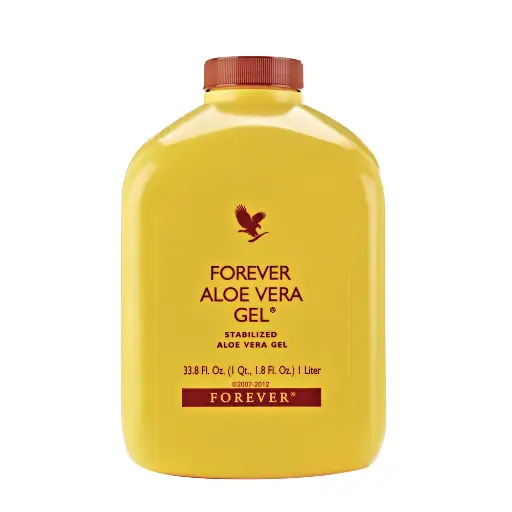 Aloe Vera Gel
Aloe Vera Gel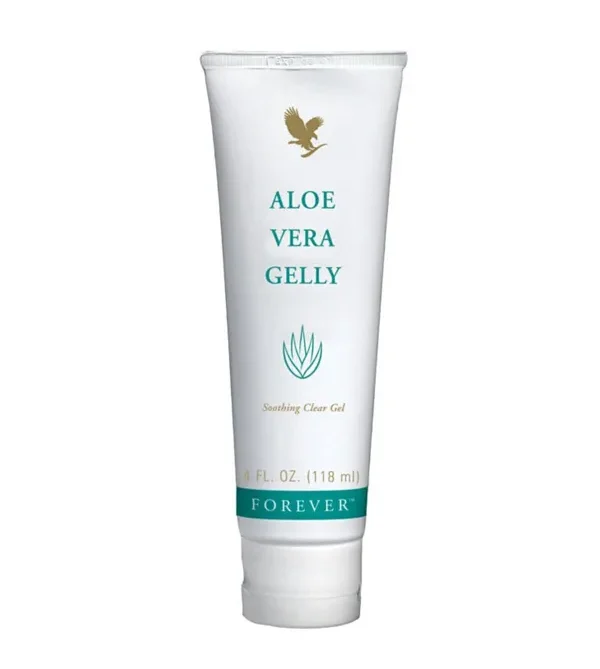 Aloe Vera Gelly
Aloe Vera GellyMany people keep both on hand – the drink for internal use and broad topical application, and the Gelly tube for targeted, thicker topical relief.
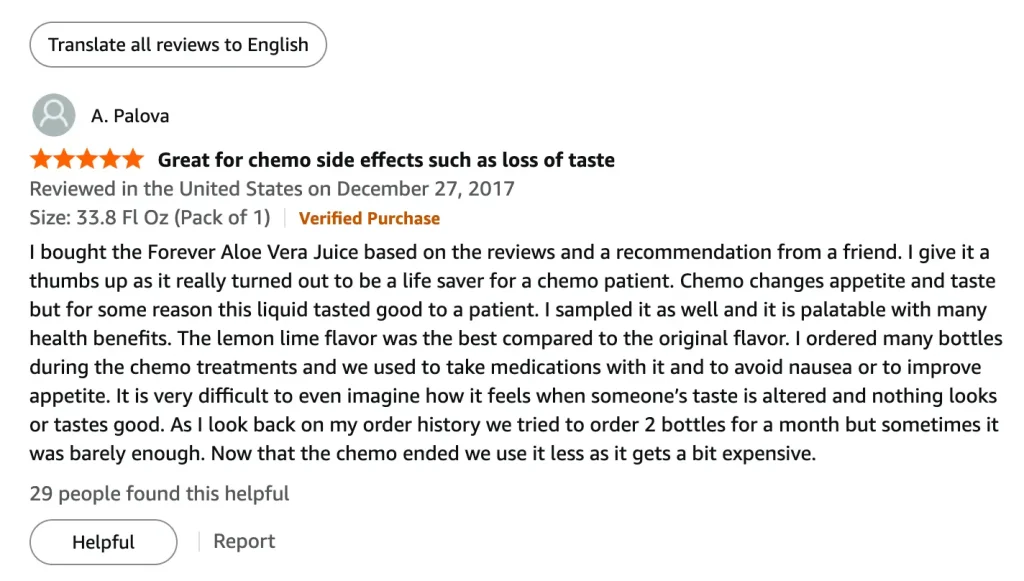
Having covered the what, why, and how, let’s objectively weigh the advantages and disadvantages before wrapping up.
FTC Notice: Results can vary.
These experiences are individual and not a guarantee of results. Always consider consulting a healthcare provider for chronic conditions. Overall, the 30-day trial cemented why so many loyal users (especially those in their 30s, 40s, and beyond) keep a bottle of this aloe gel on hand.
Next, let’s objectively weigh the pros and cons, and see how Forever Living Aloe Vera Gel stacks up against competitors in the market.
Pros vs. Cons of Forever Living Aloe Vera Gel
No product is a silver bullet. Anyone telling you otherwise is probably trying to sell you something hard. So, let’s lay it all out, the sunshine and the shadows, especially when we think about how this stacks up against other aloe options vying for your attention and your wallet.
The Shining Stuff: Where Forever Aloe Vera Gel Wins (The Pros)
1. Extremely High Purity & Quality: The Real Deal Holyfield
Okay, let’s talk turkey. The label says 99.7% pure inner leaf aloe vera gel. That number isn’t just marketing fluff. It’s a big deal. Why? Because the vast majority of aloe products out there are… well, let’s just say less than pure.
Many are made from concentrate (meaning water was removed, then added back – potentially losing good stuff in the process), loaded with fillers, thickeners, or are primarily water with a bit of aloe thrown in for label appeal.
Forever Living uses only the inner leaf gel – the potent, nutrient-rich part of the plant. They skip the outer leaf, which contains aloin (a natural laxative that can be harsh). This focus on the inner leaf is crucial for both internal consumption and gentle topical use.
And that IASC certification? That’s the International Aloe Science Council seal. It’s an independent verification that the product meets high standards for aloe content and purity. Think of it like a third-party auditor giving it a stamp of approval. In a market flooded with ‘aloe-like’ substances, this certification means you’re getting authentic, potent aloe vera.
You can feel the difference compared to those watery, questionable juices. This isn’t just aloe-flavored water; it’s practically the plant in a carton.
2. Dual Purpose (Internal & External): Your Bathroom Cabinet’s New Best Friend
This is where the value proposition really kicks in. One liter carton serves two distinct purposes. You can drink it daily as a wellness supplement to support digestion and overall health, and you can dab it onto your skin for soothing hydration or apply it to your hair for a moisture boost.
Think about that green goo you buy for sunburns – would you ever consider drinking that? Heck no! It’s usually packed with alcohol (ouch!), artificial colors, fragrances, and stabilizers. Forever’s gel, being so pure and free of nasties, bridges that gap beautifully. It simplifies your routine and potentially your shopping list.
One high-quality product pulling double duty? That’s smart value, even if the initial price tag seems higher. It’s convenience and quality rolled into one. Imagine packing for a trip – one bottle covers potential tummy troubles and dry skin or too much sun. That’s pretty neat.
3. Backed by Scientific Research: More Than Just Folklore
Aloe vera isn’t some mystical potion whispered about by ancient healers (though, historically, it kinda was!). There’s actual science backing up its benefits. Studies have explored its role in accelerating wound healing, soothing burns, improving skin hydration, and supporting digestive health. Researchers often focus on a key compound in aloe called Acemannan, a polysaccharide believed to be responsible for many of its immune-boosting and healing properties.
Because Forever’s gel is so minimally processed and boasts that high purity, it aligns closely with the type of aloe vera used in scientific research. You’re not getting a watered-down version where the active compounds might be negligible. It provides a certain peace of mind knowing that the potential benefits you’re hoping for are grounded in documented evidence, not just anecdotal claims or marketing hype.
Order from company’s website and save
Why pay $40.20 on Amazon like everyone else?
 Aloe Vera Gel
Aloe Vera Gel Aloe Vera Gelly
Aloe Vera Gelly4. Clean Formula: No Added Junk
This is huge, especially if you have sensitive skin or dietary restrictions. Let’s list what’s not in it:
- No Parabens: These preservatives are controversial and can irritate some skin types.
- No Sulfates: Often found in cleansers, they can be stripping and harsh.
- No Artificial Colors or Fragrances: Major triggers for skin reactions and allergies. The gel looks and smells like… well, aloe. Slightly earthy, maybe a bit green.
- No Gluten: Safe for those with celiac disease or gluten sensitivity.
- No Animal Products: It’s vegan-friendly.
- No Added Sugar: Crucial for diabetics, those on keto, or anyone watching their sugar intake.
- Low Calorie: Typically around 5 calories per serving, so it won’t derail your diet.
Essentially, the ingredients list is incredibly short: Pure Aloe Vera Gel, Vitamin C (Ascorbic Acid – acts as a natural preservative and antioxidant), and Citric Acid (a natural pH adjuster). That’s it. This clean profile makes it incredibly versatile and suitable for a wide range of people who react poorly to common additives found in conventional skincare and supplements. If you’ve ever had a “natural” product sting or cause redness, chances are it had hidden alcohol or fragrance. You don’t get that gamble here.
5. Cold-Stabilized for Maximum Nutrients: Keeping it Potent
Heat is the enemy of many beneficial plant compounds. Vitamins, enzymes, and delicate phytonutrients can degrade when exposed to high temperatures during processing. Forever Living uses a patented cold stabilization process. Think of it like cold-pressing juice instead of pasteurizing it – the goal is to preserve the natural goodness as much as possible.
This means the Vitamin A, C, E, B vitamins, essential minerals (like calcium, magnesium, zinc), amino acids, and those crucial enzymes naturally present in the aloe vera inner leaf are more likely to make it into the final product intact. Users often comment that Forever’s gel “feels” different or more potent than other aloe juices they’ve tried.
This cold processing, combined with the purity, is likely why. You’re getting something much closer to slicing open a fresh aloe leaf yourself, but without the mess and stabilization worries.
6. Great for Sensitive Skin Conditions: A Soothing Balm
If you wrestle with eczema, rosacea, psoriasis, or just generally reactive skin that throws a fit at the slightest provocation, finding products that don’t cause irritation can feel like searching for a unicorn. Because Forever Aloe Vera Gel is so pure, natural, and free from common irritants like alcohol, fragrance, and harsh chemicals, it’s often incredibly well-tolerated.
Its natural anti-inflammatory properties can help calm redness and itching. Its hydrating power comes from polysaccharides that bind moisture to the skin, without relying on heavy oils that can clog pores (it’s non-comedogenic).
And the fact that it contains no alcohol means it won’t sting or burn even on compromised or broken skin – a huge plus for conditions like eczema or post-procedure skin. It provides gentle, cooling relief and helps support the skin’s natural barrier function. Many users with chronic skin issues find it becomes a staple for daily soothing and maintenance.
7. Trusted Brand with a Solid Guarantee: Decades of Dedication
Forever Living isn’t some fly-by-night company that popped up last year. They’ve been specializing in aloe vera since 1978. That’s over four decades of experience! They own their own aloe plantations (in Texas and the Dominican Republic), manufacturing facilities, and distribution channels. This “farm-to-bottle” vertical integration gives them tight control over quality every step of the way – from planting the aloe pups to sealing the final package.
This level of control builds trust. You know exactly where your aloe is coming from and how it’s being handled. Furthermore, they stand behind their product. Forever Living offers a 30-day money-back guarantee for retail customers. If you try the gel and genuinely don’t feel it works for you or aren’t satisfied, you can typically get a refund (check the exact terms when purchasing).
This takes the financial risk out of trying it. Not many supplement or skincare companies offer such a straightforward satisfaction guarantee, which speaks volumes about their confidence in the product’s quality.

Claim your 15%off here…
Why pay $24.70 on Amazon like everyone else…. Today, I’m giving you a price that lets you actually test it without second-guessing.
8. Long Shelf Life Unopened & Eco-Friendly Packaging
The product comes in a Tetra Pak carton, similar to what you see for soy milk or broth. This packaging is fantastic for several reasons.
First, it uses aseptic technology, meaning the product is packaged in a sterile environment, which, combined with the minimal natural preservatives (Vitamin C), gives it a remarkably long shelf life before opening – often up to 3 years! This allows you to stock up if you find a good deal, without worrying about it expiring quickly in your pantry.
Second, Tetra Paks are designed to block out light and air, both of which can degrade the quality of natural products over time.
Third, these cartons are typically made from renewable resources (paperboard) and are fully recyclable in many areas. It’s a more sustainable choice than many plastic bottles. So, you get freshness, longevity, and a little eco-conscious nod all in one package.
The Potential Stumbling Blocks: Where It Might Fall Short (The Cons)
1. Premium Price Point: Quality Has its Cost
Let’s be upfront: This isn’t the cheapest aloe vera product on the market. A one-liter carton typically retails around the $20-$25 mark (USD, prices vary globally and by seller). If you’re drinking the recommended 2-4 ounces (60-120ml) per day, that liter might only last you 8 to 17 days.
That cost can add up, especially compared to generic aloe juices you might find for half the price at a big-box store.
The justification, of course, lies in the purity, the processing, the certifications, and the lack of fillers – you’re paying for quality and potency. But for budget-conscious individuals or families, sustaining this daily habit might be a stretch.
You need to weigh the perceived benefits against the ongoing cost. Cheaper alternatives exist, but they almost always involve compromises in purity, preservatives, or processing methods.
2. Availability & MLM Model: Not Your Average Store Run
You generally can’t just stroll into your local Target or Walgreens and pick up a carton of Forever Aloe Vera Gel. Forever Living operates primarily through a network marketing (MLM) or direct sales model. This means the main way to buy it is through an authorized Forever Business Owner (FBO) or directly from the company’s official website.
While buying online directly is much easier now than it used to be (you typically don’t need to “join” anything just to be a customer), it still requires planning rather than impulse buying. The MLM association itself can be off-putting for some people who’ve had negative experiences or simply dislike the model.
You will find it listed on platforms like Amazon or eBay, often sold by independent distributors. However, caution is advised here. You need to check the seller’s reputation, ensure the product is the current formulation (the 99.7% in the Tetra Pak, not older versions), and be aware that prices might be inflated.
There’s also a slight risk of getting older or improperly stored stock. Buying direct from Forever or a trusted FBO is the safest bet for freshness and authenticity, plus access to the money-back guarantee.
3. Taste and Texture Might Not Please All: Brace Your Taste Buds
If you’re expecting a sweet, refreshing fruit juice, you’re in for a surprise. Pure aloe vera gel has a unique taste – it’s often described as slightly bitter, tangy, or “green.” It’s generally mild, but definitely not inherently delicious to everyone. Some people don’t mind it straight, while others find it quite challenging.
The good news is it mixes easily into water, juice (like orange or pineapple, which masks the bitterness well), or smoothies. But this adds an extra step if you’re taste-sensitive.
The texture can also be unexpected. It’s not a thick, viscous gel like the topical sunburn stuff. It’s more like a slightly pulpy liquid, quite fluid.
This makes it easy to drink but potentially a bit messy for topical application if you’re not careful. Pouring a small amount into a spray bottle can be a game-changer for skin application, or just applying it quickly and rubbing it in works too. But be prepared – it’s runnier than you might think.

Claim your 15%off here…
Why pay $24.70 on Amazon like everyone else…. Today, I’m giving you a price that lets you actually test it without second-guessing.
4. Needs Refrigeration & Has a Use-By Time After Opening
That pristine purity comes with a condition: once you break the seal on that Tetra Pak, it must be refrigerated. Because it lacks strong artificial preservatives, exposure to air starts the clock ticking. Forever Living generally recommends consuming the opened carton within 30 days for optimal freshness and potency. Some users stretch this to 45 or even 60 days, but the quality might start to decline.
If you’re drinking it daily, a liter will likely be gone well within that timeframe. However, if you primarily bought it for occasional topical use (like sunburns or skin irritations), a whole liter might spoil before you can finish it. This potential for waste is a drawback. The company does offer smaller 330ml mini-bottles, which are great for travel or infrequent use, but they come at a significantly higher cost per milliliter.
5. Not Certified Organic (A Detail for Some)
This one catches people out sometimes. While Forever Living emphasizes their sustainable farming practices, use of natural fertilizers (aloe castings!), hand-filleting, and avoidance of pesticides – essentially mirroring organic methods – the flagship Aloe Vera Gel product sold in many markets (like the US) doesn’t carry the official USDA Organic seal. Some competitor brands do have this certification (like Lily of the Desert).
Forever does hold certifications like the Soil Association approval in the UK for some operations, indicating high standards. Why no USDA seal everywhere? It could be due to the complexities and costs of certifying vast international operations, or specific processing steps (like adding Vitamin C) might complicate the certification pathway.
For consumers who strictly prioritize the official “Certified Organic” label above all else, this might be a reason to choose a competitor, even if it means accepting other trade-offs (like preservatives in Lily’s case).
6. Possibility of Allergic Reaction: Listen to Your Body
Aloe vera is generally very safe, but like any natural substance, allergies can occur, though they are rare. Some individuals might be inherently sensitive to aloe itself.
For topical use, it’s always wise to do a patch test first, especially if you have sensitive skin or haven’t used pure aloe before. Apply a small amount to an inconspicuous area (like your inner wrist) and wait 24-48 hours to see if any redness, itching, or irritation develops.
Internally, while uncommon, some sensitive individuals might experience mild digestive upset, like cramping or loose stools, particularly when first starting or if consuming very large amounts.
Starting with a smaller dose (e.g., 1 ounce/30ml) and gradually increasing can help assess tolerance. These reactions are typically due to individual sensitivity, not a flaw in the product’s quality, but it’s crucial to be aware and listen to your body.
Order from company’s website and save
Why pay $40.20 on Amazon like everyone else?
 Aloe Vera Gel
Aloe Vera Gel Aloe Vera Gelly
Aloe Vera Gelly7. Not a Miracle Cure: Manage Expectations Wisely
Let’s be crystal clear: Forever Living Aloe Vera Gel is a high-quality natural supplement and topical treatment. It can offer significant support for skin health, hydration, and digestive well-being. However, it is not a magic bullet or a cure-all.
If you have a serious medical condition – severe eczema, Crohn’s disease, ulcerative colitis, etc. – aloe vera gel can potentially be a beneficial part of your overall management plan (ideally discussed with your healthcare provider), but it’s highly unlikely to replace conventional medical treatments or resolve the condition single-handedly.
Some marketing hype around aloe vera (often from less scrupulous sources or overzealous distributors) can create unrealistic expectations. Forever Living itself is generally responsible in its official claims, sticking to structure/function statements allowed for supplements (e.g., “supports digestive health”) rather than claiming to treat diseases (you’ll see the standard FDA disclaimer on the packaging).
It’s important to approach it with a realistic mindset: it’s a powerful natural tool, but still a tool, not a guaranteed fix for everything.
The Bottom Line on Pros vs. Cons
As you can see, the pros heavily emphasize purity, versatility, quality control, and a clean formulation grounded in science. The cons mostly revolve around cost, accessibility, sensory aspects (taste/texture), and the practicalities of using a preservative-free natural product.
For many seeking a potent, multi-purpose aloe vera experience, the pros significantly outweigh the cons, especially if they prioritize quality over rock-bottom price.
Now, how does this champion of purity stack up when you put it head-to-head with other contenders in the aloe arena? Let’s get into the comparisons.
How Does It Compare to Other Aloe Vera Products? The Aloe Showdown
Walking down the health food aisle or Browse online, you’ll see other names pop up. “Best organic aloe vera gel,” “pure aloe juice,” the claims fly fast and furious. Let’s put Forever Living’s offering side-by-side with some popular alternatives to see where the real differences lie.
- Lily of the Desert Aloe Vera Juice/Gel:
- The Scoop: A very well-known brand, readily available in health stores like Whole Foods. They offer inner fillet aloe juice/gel, boast USDA Organic and IASC certifications, and claim around 99% aloe content. Their unique selling point is “Aloesorb,” a patented process to isolate and enhance the concentration of high molecular weight aloe polysaccharides (like Acemannan).
- The Comparison: Both Forever and Lily offer high-quality, high-purity inner leaf aloe. Lily wins on the “Certified Organic” label and wider retail availability, often at a slightly lower price per ounce.
However, most Lily of the Desert products contain preservatives – typically citric acid (natural) plus small amounts of potassium sorbate and sodium benzoate (artificial preservatives, though considered safe in low concentrations).
Forever Living stands out with zero artificial preservatives, relying solely on Vitamin C and its aseptic packaging. Forever also explicitly adds Vitamin C, offering an antioxidant boost Lily doesn’t have.
Taste-wise, many users report Lily’s aloe as being noticeably more bitter than Forever’s. The significance of Aloesorb vs. Forever’s high natural polysaccharide content due to minimal processing is debatable – both aim for potency. - What Competitor Reviews Miss: Many reviews praise Lily’s organic status but might gloss over the presence of artificial preservatives or fail to compare the taste profile directly with less bitter options like Forever. The transparency of Forever’s sourcing and processing often gets less limelight than Lily’s Aloesorb marketing.
- George’s “Always Active” Aloe Vera Juice:
- The Scoop: This one is unique. George’s uses a process called fractional distillation to remove virtually all the solids, color, and flavor components (including the bitterness and the anthraquinones like aloin).
The result? An aloe vera liquid that looks and tastes exactly like water. Its big draws are the neutral taste and the fact that it requires no refrigeration and has an indefinite shelf life. - The Comparison: If the taste of regular aloe is an absolute deal-breaker for you, George’s solves that problem completely.
However, the heavy processing required to achieve this likely removes a significant portion of the beneficial compounds – the very vitamins, minerals, enzymes, and complex polysaccharides (including Acemannan) that give aloe its therapeutic properties.
Critics argue it’s essentially “aloe-flavored water” with minimal active ingredients remaining. It’s also not IASC certified, raising questions about verified aloe content and potency.
Compared to Forever’s nutrient-rich, minimally processed gel, George’s offers palatability at the potential cost of efficacy. You might be drinking something easy, but are you getting the full spectrum of aloe’s benefits? Likely not. - What Competitor Reviews Miss: “Top 10 Aloe Juice” lists often include George’s for its unique taste profile but frequently fail to adequately address the significant potential downside: the drastic reduction in active compounds due to the distillation process.
They highlight the convenience without fully exploring the potential efficacy trade-off compared to fuller-spectrum products like Forever’s.
- The Scoop: This one is unique. George’s uses a process called fractional distillation to remove virtually all the solids, color, and flavor components (including the bitterness and the anthraquinones like aloin).
- Seven Minerals or Amara Beauty Organic Aloe Gel (Topical Focus):
- The Scoop: If you’re only looking for an aloe gel for skin and hair (not for ingestion), brands like Seven Minerals or Amara Beauty are popular choices, often found on Amazon.
They typically boast high purity (sometimes claiming 99% or even “100% pure”), organic certification, and use natural thickeners like seaweed extract (xanthan gum) to create a more familiar gel-like consistency.
They are usually free from harsh chemicals and priced competitively for skincare (e.g., around $15-$20 for a 12 oz bottle). - The Comparison: For strictly topical use, these gels offer excellent value and performance. They provide soothing hydration, are often organic, and have a texture many prefer for skin application.
However, they are not formulated or certified for internal consumption. They usually contain preservatives like citric acid and ascorbic acid, plus the thickener, none of which are intended for drinking.
Forever Living’s gel, while runnier and perhaps slightly less convenient to apply topically straight from the carton (unless decanted), offers the exact same soothing and hydrating benefits for skin and hair plus the significant advantage of being food-grade for internal use.
You get two products in one with Forever, which you don’t get with these topical-only gels. - What Competitor Reviews Miss: Reviews for these topical gels understandably focus on skincare results – sunburn relief, moisturizing effects, hair conditioning. They rarely, if ever, mention the internal dimension, thus missing a key comparison point with a versatile product like Forever’s.
Our review, covering both internal and external use, gives you that broader perspective.
- The Scoop: If you’re only looking for an aloe gel for skin and hair (not for ingestion), brands like Seven Minerals or Amara Beauty are popular choices, often found on Amazon.
- Aloeride Aloe Vera Capsules or Herbalife Aloe Concentrate:
- The Scoop: These represent different approaches. Aloeride is a UK-based brand offering dehydrated aloe vera powder in capsules, marketed for both humans and horses (!).
They emphasize high concentration of actives per dose compared to liquid aloe and argue it’s more cost-effective. Herbalife, another MLM company, offers flavored Aloe Concentrates (Mango, Cranberry, etc.). - The Comparison: Aloeride offers convenience (no taste, no refrigeration) and potentially concentrated dosing, appealing to those who dislike liquids or travel frequently.
However, you lose the topical application benefit entirely, and the experience of drinking a fresh, whole-food product. Herbalife’s concentrates, while potentially palatable due to added flavors and sweeteners, contain a much lower percentage of actual aloe vera.
They are essentially flavored water with some aloe added, plus preservatives and often sugar or artificial sweeteners. They shouldn’t be considered comparable to a pure, high-potency gel like Forever’s for therapeutic benefits. - What Competitor Reviews Miss: Affiliate reviews promoting Herbalife often highlight the flavors and MLM business opportunity but frequently obscure the low actual aloe content and added ingredients.
Aloeride comparisons focus on dosage concentration but miss the versatility and whole-food aspect of Forever’s liquid gel. Forever Living provides near-complete transparency about its 99.7% purity, a standard many competitors (especially concentrates) don’t meet or clearly disclose.
- The Scoop: These represent different approaches. Aloeride is a UK-based brand offering dehydrated aloe vera powder in capsules, marketed for both humans and horses (!).
The Takeaway from Comparisons
Forever Living Aloe Vera Gel consistently holds a strong position, particularly when you prioritize:
- Maximum Purity & Minimal Processing: Near 100% inner leaf gel with no artificial preservatives.
- Versatility: Equally effective and safe for internal and external use.
- Transparency & Trust: Decades of experience, farm-to-bottle control, IASC certification.
- Potency: Cold-stabilization designed to retain natural nutrients like Acemannan.
Competitors might beat it on price (sometimes with quality compromises), specific certifications (Organic label), convenience (capsules), palatability (George’s water-like taste), or retail availability (Lily). But few, if any, match its specific combination of high purity, dual functionality, and preservative-free formulation.
After digging through countless reviews and product descriptions, a recurring theme emerged: many sources don’t dive deep enough into the science (like Acemannan levels), the details of certifications, the implications of processing methods, or the transparency of ingredient lists. That’s the gap we’ve aimed to fill here.
If those details matter to you – if you want to be sure you’re getting potent, authentic, versatile aloe vera – then Forever Living’s gel is undeniably a top-tier contender worth serious consideration.
So, you’re intrigued? Maybe even ready to give this “plant in a box” a shot? Let’s talk about the practicalities – where to get it, how to potentially save a few bucks, and then tackle some common questions that might still be rattling around in your head.
Where to Buy & Exclusive Offers: Getting Your Hands on the Good Stuff
Alright, you’ve waded through the details, weighed the pros and cons, and maybe you’re thinking, “Okay, I want to try this.” Here’s the lowdown on how to purchase Forever Living Aloe Vera Gel, plus some insider tips to get the best bang for your buck.
1. Official Forever Living Store or Distributor (Safest & Recommended Route)
- How: The most reliable way is directly through Forever Living. You can either purchase from the company’s official website specific to your country or connect with a registered Forever Business Owner (FBO), often called a distributor.
- Why: This guarantees you’re getting a genuine, fresh product directly from the source. It also ensures you’re covered by the 30-day money-back guarantee. You can usually find a local FBO via a locator tool on the Forever website if you prefer personalized service, or simply order online for direct shipping.
- Price: Expect the retail price to be around $20-25 per liter (as of late 2024/early 2025, adjust for inflation and region).
- The Inside Track (Affiliate Offer): Now, remember how I said I use this stuff myself and look out for my readers? Because you’ve stuck with me through this deep dive, I reached out to Forever Living.
Full transparency: I’m an affiliate, meaning I earn a small commission if you buy through my link, at no extra cost to you.
But I pushed for something for you.
They agreed to offer my readers an exclusive discount. Instead of the standard retail price (which hovers around $24.70 on places like Amazon), you can grab it for just $19.38 through my dedicated link.
===> Get Your Exclusive Discount on Forever Aloe Vera Gel Here <===
(Note: This special price is subject to availability and may change. It’s a genuine offer negotiated for my readers.) This is the same high-quality, 99.7% pure gel, just at a price that makes trying it out a little easier on the wallet.
Buying through this link ensures authenticity and supports this kind of in-depth content.
Order from company’s website and save
Why pay $40.20 on Amazon like everyone else?
 Aloe Vera Gel
Aloe Vera Gel Aloe Vera Gelly
Aloe Vera Gelly2. Amazon and Third-Party Retailers (Use Caution)
- How: Yes, you’ll likely find Forever Aloe Vera Gel listed on Amazon, eBay, and similar platforms.
- Why/Why Not: Convenience is the main draw – easy ordering, potentially faster shipping (especially with Prime), and maybe you have gift cards. However, exercise caution. Since FLP products are primarily sold via distributors, listings on these platforms are often from individual FBOs reselling their stock.
- Risks: Check seller reviews carefully. Ensure the listing specifies the 99.7% pure inner leaf gel in the Tetra Pak (not older formulas in different packaging). There’s a slightly higher risk of receiving older stock or products not stored optimally (remember, heat affects quality).
Pricing can also be significantly higher than retail ($25+ is common) as sellers incorporate platform fees and their own markup. The money-back guarantee might be harder to claim via a third-party seller versus buying direct. - If You Must: If Amazon is your preferred channel, look for listings ideally “Shipped from and sold by Amazon” (less common for FLP) or from highly reputable sellers with recent positive feedback specifically mentioning product freshness.
Here’s a typical Amazon link for comparison, but remember the potential pitfalls: Buy Forever Aloe Vera Gel on Amazon (Affiliate Link) – Again, check pricing and seller details carefully.
Order from company’s website and save
Why pay $40.20 on Amazon like everyone else?
 Aloe Vera Gel
Aloe Vera Gel Aloe Vera Gelly
Aloe Vera Gelly3. Exclusive Offers & Bundles (Direct from Forever)
- Tri-Pack: Forever often offers a “Tri-Pack” which includes three 1-liter cartons – typically one original (plain), one Aloe Berry Nectar, and one Aloe Peaches. This is a great way to try the flavored options (which contain the same high-quality aloe base plus natural fruit concentrates/flavors) and usually comes at a slight discount per bottle compared to buying three individually. Perfect for stocking up.
- Preferred Customer Program: Forever Living has a free program you can sign up for directly on their website called “Forever Preferred Customer” (or similar name depending on region). This instantly gives you a discount on retail prices (often starting at 5% and potentially increasing with purchase volume over time, maybe up to 15-30% in some tiers).
You also get access to occasional special offers and loyalty perks. There’s typically no obligation to buy regularly or sell anything. It’s purely a way to save money if you plan on being a repeat customer. Definitely worth checking out before making your first purchase via the official site. - Seasonal Sales: Keep an eye out, especially around holidays or traditional sale periods (New Year, Summer). Sometimes Forever or individual distributors run limited-time promotions like free shipping or bundled deals. Asking your FBO contact (if you have one) or checking the official website’s “Offers” section is the best way to catch these.
4. Local Stores (Less Common)
- In some areas, you might find Forever Living products stocked in small, independent health food stores, holistic wellness centers, or chiropractic/naturopathic clinics. These businesses often have a relationship with a local FBO.
It’s less common than finding brands like Lily of the Desert in major chains, but worth asking around if you prefer buying in person. The “Find an FBO” tool on the Forever website might help locate nearby options.
Breaking Down the Cost: Price Per Serving Perspective
That ~$20-25 price tag can feel hefty upfront. Let’s put it in perspective:
- A 1-liter carton is about 33.8 fluid ounces.
- A typical daily serving might be 2-4 ounces (60-120 ml).
- At 2 oz/day, the bottle lasts ~17 days. Cost per day: ~$1.18 – $1.47 (at $20-$25/bottle).
- At 4 oz/day, the bottle lasts ~8.5 days. Cost per day: ~$2.35 – $2.94 (at $20-$25/bottle).
When you compare that daily cost to a fancy coffee ($4-6), a store-bought smoothie ($5-8), or even other specialized supplements, it starts to look more reasonable, especially considering its dual internal/external use and high purity. Using the discounted price ($19.38) makes it even more palatable:
- At 2 oz/day: ~$1.15 per day.
- At 4 oz/day: ~$2.28 per day.
The Savings Hack (For the Truly Committed)
f you fall in love with the product, use it consistently, and maybe explore other Forever Living items (they have skincare, supplements, bee products, etc.), you could consider signing up as a Forever Business Owner yourself.
This doesn’t necessarily mean you have to actively sell (though that’s the model’s intent). Some people sign up primarily to access wholesale pricing for their personal purchases, which can be significantly lower (discounts up to 30% or more depending on volume/rank).
This only makes sense if you’re a dedicated, long-term user and don’t mind the MLM structure and potential minimum purchase requirements to maintain the discount. For most casual users, the Preferred Customer discount is simpler and sufficient.
Affiliate Disclosure & Honesty
Just to reiterate clearly: Some links in this section are affiliate links (clearly marked or implied by the context of the offer). If you choose to purchase through them, I may earn a small commission.
This comes at absolutely zero extra cost to you – in the case of the special offer, it actually saves you money. This commission helps support the time and effort required to create comprehensive, unbiased reviews like this one.
I only recommend products I genuinely believe in and have researched thoroughly (and in this case, use personally). My recommendation is based on the product’s merits, not the potential commission. Thank you if you do choose to use these links!
Burning Questions: Your Aloe Vera Gel FAQs Answered
You’ve got the info, the comparisons, the buying options… but maybe a few practical questions are still buzzing? Let’s tackle some common ones:
How much should I drink daily?
Forever Living often suggests starting with 2-4 ounces (60-120ml) per day. Some people take it once daily, others split the dose (e.g., 2 oz morning, 2 oz evening). It’s wise to start on the lower end (2 oz) for a few days to see how your body responds, especially your digestive system. You can then gradually increase if desired. Listen to your body!
How do I store it after opening?
Crucial: Refrigerate immediately after opening! Keep it sealed tightly in the fridge. Aim to consume within 30 days for the best quality and potency.
What does it really taste like? Can I make it taste better?
Honestly? It’s mild but distinct. Slightly bitter, a bit tangy, with an underlying “green” or plant-like flavor. It’s not awful, but it’s not juice.
Yes, you can make it taste better! Mix it with:
A splash of fruit juice (orange, pineapple, cranberry, grape work well)
Coconut water
Your daily smoothie (you won’t even notice it)
A bit of water with lemon or lime
Forever’s own flavored versions (Berry Nectar or Peaches) if you prefer convenience.
Can I use it on my face and hair?
Forever Living often suggests starting with 2-4 ounces (60-120ml) per day. Some people take it once daily, others split the dose (e.g., 2 oz morning, 2 oz evening). It’s wise to start on the lower end (2 oz) for a few days to see how your body responds, especially your digestive system. You can then gradually increase if desired. Listen to your body!
Is it good for specific conditions like sunburn, eczema, gut health, or acid reflux?
Sunburn: Yes, it’s fantastic. Cooling, soothing, hydrating, helps reduce redness and peeling. Apply generously and frequently. Much better than alcohol-based green gels.
Eczema/Psoriasis/Rosacea: Many users find significant relief due to its purity, anti-inflammatory, and hydrating properties. It can calm redness and itching. Patch test first! It’s supportive care, not necessarily a cure.
Gut Health: Aloe vera (specifically the inner leaf gel) is traditionally used to soothe the digestive tract lining, support regularity, and promote healthy gut bacteria. Many people report improvements in issues like bloating, indigestion, or constipation. It’s thought to have prebiotic effects.
Acid Reflux: Some individuals find aloe vera gel helps soothe esophageal irritation associated with reflux due to its coating and anti-inflammatory properties. However, results vary, and it’s not a primary treatment. Discuss with your doctor, especially if you’re on medication.
Remember: It’s a supplement for support, not a replacement for medical advice or treatment for diagnosed conditions.
What’s the difference between this pure gel and those bright green ‘Aloe Gels’?
Night and day! Those bright green gels are typically designed only for topical sunburn relief. They often contain very little actual aloe vera, lots of water, alcohol (which can dry and sting), artificial colors (hence the neon green), fragrances, and chemical thickeners. Forever’s gel is 99.7% pure inner leaf aloe, food-grade, preservative-free, and suitable for both internal and external use.
Does it expire?
Unopened: Yes, check the expiration date printed on the Tetra Pak (usually 2-3 years from manufacture). Store unopened cartons in a cool, dry place.
Opened: Yes, effectively. Use within ~30 days after opening, keeping it refrigerated. It won’t necessarily “go bad” like milk, but its potency and freshness diminish over time.
What is Acemannan, and why does it matter?
Acemannan is a unique complex polysaccharide (a type of carbohydrate chain) found abundantly in the inner leaf gel of the aloe vera plant. It’s considered one of the primary bioactive compounds responsible for many of aloe’s health benefits, particularly its immune-modulating, anti-inflammatory, and wound-healing properties.
High levels of intact Acemannan are often seen as a marker of a high-quality, potent aloe vera product. Forever’s focus on minimal processing aims to preserve this key component.
The Final Sip
We’ve journeyed deep into the heart of Forever Living Aloe Vera Gel. From its near-unrivaled purity and dual-purpose magic to the practicalities of taste, cost, and where to find it – hopefully, you now feel thoroughly equipped to decide if it deserves a spot in your wellness toolkit.
This review wasn’t just about listing features; it was about understanding the why behind them. Why purity matters. Why cold processing makes a difference. Why being free from junk ingredients is crucial for sensitive systems. We aimed for 80% solid education and maybe just a 20% gentle encouragement, because ultimately, the best choice is the one that you feel confident and informed about.
My enthusiasm might have bubbled through (I confess, quality aloe does excite me!), but it’s genuinely rooted in the evidence, the science, and the real-world experiences of countless users over decades – including my own.
So, who is this really for?
If you’re nodding along to any of these, Forever Living Aloe Vera Gel is definitely worth considering:
- You’re over 30 and noticing your skin isn’t as naturally hydrated or resilient as it used to be.
- You struggle with dry, sensitive, or reactive skin (eczema, rosacea) and need something pure and soothing.
- You’re looking for a natural, chemical-free alternative for sunburn relief or general skin hydration.
- You’re exploring natural ways to support your digestive health – maybe dealing with occasional bloating, irregularity, or seeking gut lining support.
- You value high purity, minimal processing, and transparency in your supplements and skincare.
- You appreciate the convenience and value of a single product that serves both internal wellness and external care needs.
- You’re willing to invest a bit more for demonstrably higher quality and potency compared to cheaper, potentially diluted alternatives.
It’s a standout example of a product that genuinely bridges the gap between a therapeutic wellness supplement and a high-performance skincare ingredient, excelling in both roles.
If you felt a connection with the benefits we discussed, if the commitment to quality resonates with you, I encourage you to give it a try. Use that exclusive link for the best price Your Discount Here →, listen to your body, observe how your skin responds, and see if this simple yet potent gift from nature finds a permanent place in your routine.
Here’s to harnessing the incredible power of nature’s “first aid plant” – may it bring soothing relief, radiant health, and perhaps become a trusted ally on your wellness journey.
Stay hydrated, protect your skin, and keep seeking natural solutions that truly work for you!





